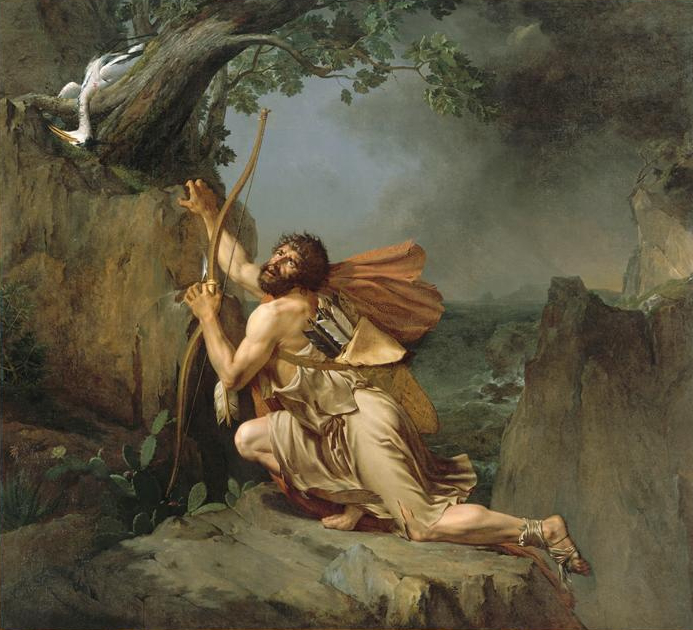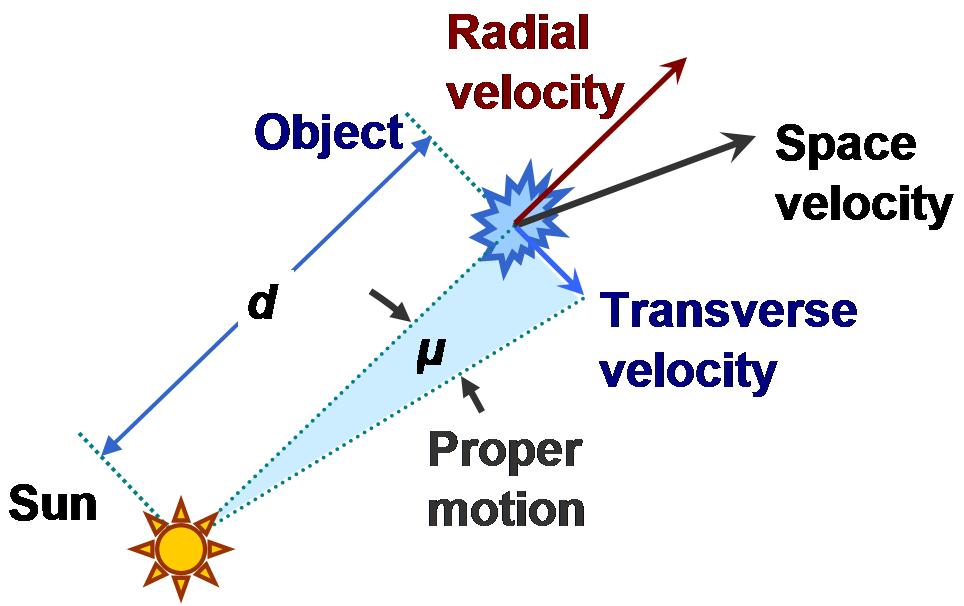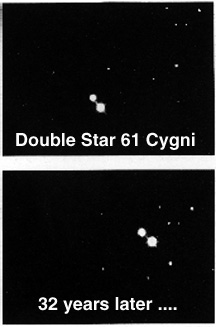Julian Date: 2459057.16
2019-2020: CLXXXV
THE DAILY ASTRONOMER
Monday, July 27, 2020
Remote Planetarium 72: Proper Stellar Motions
Let's begin today's class with a demonstration. Fold your hands on your desk, close your eyes and count to seven. Go ahead, we'll wait....
Welcome back. During that seven second meditation, you traveled one thousand miles through the Milky Way Galaxy. Well, more precisely, the Sun traveled through the galaxy and dragged the entire solar system, including the planets, moon and other bodies, with it. The Sun is moving through the Milky Way at 143 miles per second: every second of every day. At this rapid clip, the Sun and the rest of the solar system completes one orbit around the Milky Way every 225 million years, a period called a "galactic year." Every other star within the galaxy also moves quite rapidly. The velocity depends on location: stars such as the Sun that reside along the spiral arms travel more slowly than those clustered around the nucleus.
Even though the stars we see in the sky are moving at speeds comparable to that of the Sun, they each exhibit a different proper motion, defined as the motion that displaces them relative to a set position, which, in our case, is the First Point of Aries, or the Vernal Equinox.* Three factors determine a star's proper motion:
- its distance
- its transverse velocity
- its radial velocity
Distance:
The closest stars tend to exhibit the highest proper motions. The relationship between distance and apparent motion is quite intuitive. Think of watching a truck driving along a freeway. If you happen to be far away from the truck, its progression across your sight line seems slower than it would if you were standing closer to it. In the 19th century, astronomers such as Friedrich Bessel chose to measure the parallaxes of stars with the highest proper motion as they correctly assumed they were the closest to our solar system.
Transverse velocity: the component of velocity across the sight line.
Let's use a sports analogy. Imagine you're watching a tennis match from the center court. During each volley, the tennis ball will exhibit a high transverse velocity: it will move quickly from left to right according to your perspective. A star with a high transverse velocity will exhibit a greater proper motion than one that is not moving as quickly along the sight line.
Radial velocity: the component of velocity along the sight line.
To continue the sports analogy, now imagine you're one of the tennis players. The ball's radial velocity will be much higher than its transverse velocity as the ball moves directly away from and then back toward you. (As the players are striking the tennis ball so that it hits different points within the opponent's court, it will also exhibit a transverse velocity component as well.) If a star has a high radial velocity but zero transverse velocity, it will exhibit no proper motion at all. The star will appear to maintain the same position relative to the other stars. Of course, if the star is moving away from the Sun, its brightness will decrease over time. If it is moving toward the Sun, its brightness will increase.
From our perspective, all these motions are relative to the Sun's, which is following its own orbital path around the galaxy. Because no star's path is precisely the same as the Sun's, each star will exhibit both radial and transverse velocities in varying amounts. The actual proper motion is determined by combining these two velocity components and the star's distance. A graphic below shows the relations between these factors and the proper motion.
Astronomers measure proper stellar motions in mill-arc seconds/year in terms of declination and right ascension.
____________________________________
Reminder:
Declination: a celestial body's apparent angular distance from the celestial equator. Measured in degrees, minutes, seconds
Right ascension: a celestial body's apparent angular distance from the point of the vernal equinox. Measured in hours, minutes, seconds.
_____________________________________
The five stars with the highest proper motions:
- Barnard's Star declination pm: 10328.12 mas/year
- Kapetyn's Star declination pm: -5730.84 mas/year
- Groombridge 1830 declination pm: -5813.62 mas/year
- Lacaille 9352 declination pm: 1327.52 mas/year
- Gliese 1 declination pm: -2337.71 mas/year
61 Cygni, the first star system whose distance was determined by trigonometric parallax, exhibits a high proper motion. Here we can observe how much the two stars comprising 61 Cygni shifted over the course of 32 years.
Over long time periods, proper stellar motions will affect the appearance of the constellations. However, the proper motions are so small (on the order of arc-seconds per year**) that the constellations will appear the same even over thousands of years. Though the identities have varied, the star patterns adorning our sky look the same now as they have throughout recorded history. Were you to travel back to ancient Egypt, you'd observe Orion high above you and would be hard pressed to notice much of a difference. Similarly, if you propel yourself forward thousands of years, the same Orion would appear. (Assuming, of course, that Betelgeuse hasn't gone supernova in the interim.)
Now, if you could see the sky tens of thousands of years from now, the proper stellar motions would become more apparent. The constellations would experience noticeable distortions. The following is an image of the Big Dipper*** at different time periods.

This image illustrates that the Big Dipper will experience profound changes in the distant future. Eventually, it will lose the Big Dipper shape entirely. So, the constellations you see when you're a 100 won't be exactly the same as those you saw when you were, let's say, 10. However, the changes are so negligible, that it will seem as though no time has passed at all, at least amongst the Pantheon of the Constellations.
[See a fascinating -and a bit eerie- time lapse sequence of Orion the Hunter as its appearance changes over tens of thousands of years on the planetarium web-site:
https://usm.maine.edu/planet/remote-planetarium-72-proper-stellar-motions ]
As we prepare to move onto galactic astronomy, it is helpful to remember that none of the stars are stationary. All of them are traveling within the Milky Way at various velocities and directions. When we observe our night sky, the stars all seem stationary. They are nothing of the sort. Were we able to watch millions of years pass over a single night, the stars would be darting rapidly through the sky: some vanishing, others appearing; very much like a swarm of bees. Constellations would take form and dissipate like clouds. Like so much else, the "inert night sky" is merely an illusion.
*Another example of astronomical ancestor worship. The vernal equinox point was once located in the constellation Aries the Ram. Precession shifted it into the Pisces region in 100 BCE. However, astronomers still refer to the vernal equinox point as the "First Point of Aries." They probably will continue to do so even when the vernal equinox enters Aquarius in the early 28th century.
To subscribe or unsubscribe from the Daily Astronomer:




